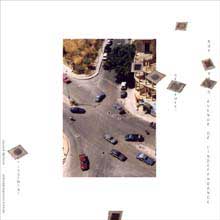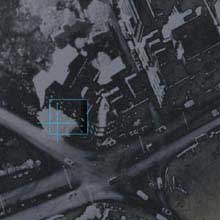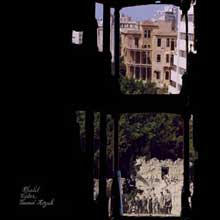| The
bf1237, widely known as the barakat building or the yellow building is
located at the crossing of Damascus road and Independance Avenue, on Beirut's
former green line which used to cut the two parts of beirut during the
successive 1975-1990 wars. |
| Built
in 1924 by architect Youssef Aftimus (1866-1952), the later was appropriated
by the militias in the late seventies throughout the eighties. it has,
since 1990, been subject of a public debate concerning its eventual destruction
or transformation. |
| The
Atelier de Recherche's purpose is not to evoke the importance of saving
such historical architectures and is against all a priori being nostalgic
or sentimental. Its aim is to develop city awareness and to experiment
new approaches tackling urban interventions through several exercises. |
| Today
the bf1237 is out of order, deserted & cut off. It does not have
a specific function: it is an anarchitecture. Such buildings grew
up as we did , aliens in their own city. thus the bf 1237 becomes
an instrument, a tool for unfolding ‘shared singularities’ that will help
reading the city and dealing with it, going beyond the alternatives of
new versus old, tabula rasa versus restoration, etc. |
| Using
it as a tool implies being aware that each time an irreducible experience
comes into play, and each time across its complexity appears a common problematic. |
| This
‘common’ is the conventional mechanism that makes our ‘fake’ mundane :
forgetting, & concealing, reducing ‘what is taking place now’ to a
simplified flat representation that prevents us from perceiving the
city as a city. |
| Urban
facts are twofold: on one hand we use them in our everyday life ( ‘green
line’, east/west beirut, landmarks, historic bldg. etc...) on the other
hand they belong to another dimension that we are unable to comprehend;
unless we change our way of reading : this reading turned into
the ‘practice of the city’. |
| EXTRACTS:
The BF 1237 project was partially exhibited La Fabrika (former 'Imprimerie
Catholique') during the 'Architecture Days'. completed and redesigned,
it will be presented at Art-Deco SIMAA 2000 (Beirut Hall, may 16-21,
2000) as the Machines Célibataires. |
| "a
multiplicity of pores, or blackheads, or little scars or stitches. breasts,
babies, and rods. a multiplicity of bees, soccer players, or tuaregs. a
multiplicity of wolves or jackals… first something plays the role of the
full body – the body without organs… it is also the skin as envelope or
ring, and the sock as reversible surface. |
| it
can be a house or part of a house, any number of things, anything… a body
without organs is not an empty body stripped of organs, but a body upon
which that which serves as organs… is distributed according to crowd phenomena,
in Brownian motion, in the form of molecular multiplicities… thus the body
without organs is not a dead body but a living body all the more alive
and teeming once it has blown apart the organism and its organization…
the full body without organs is a body populated with multiplicity." |
| Gilles
Deleuze & Felix Guattari, A Thousand Plateaus. Capitalism and Schizophrenia,
translated by Brian Massumi, Minneapolis 1987. |









